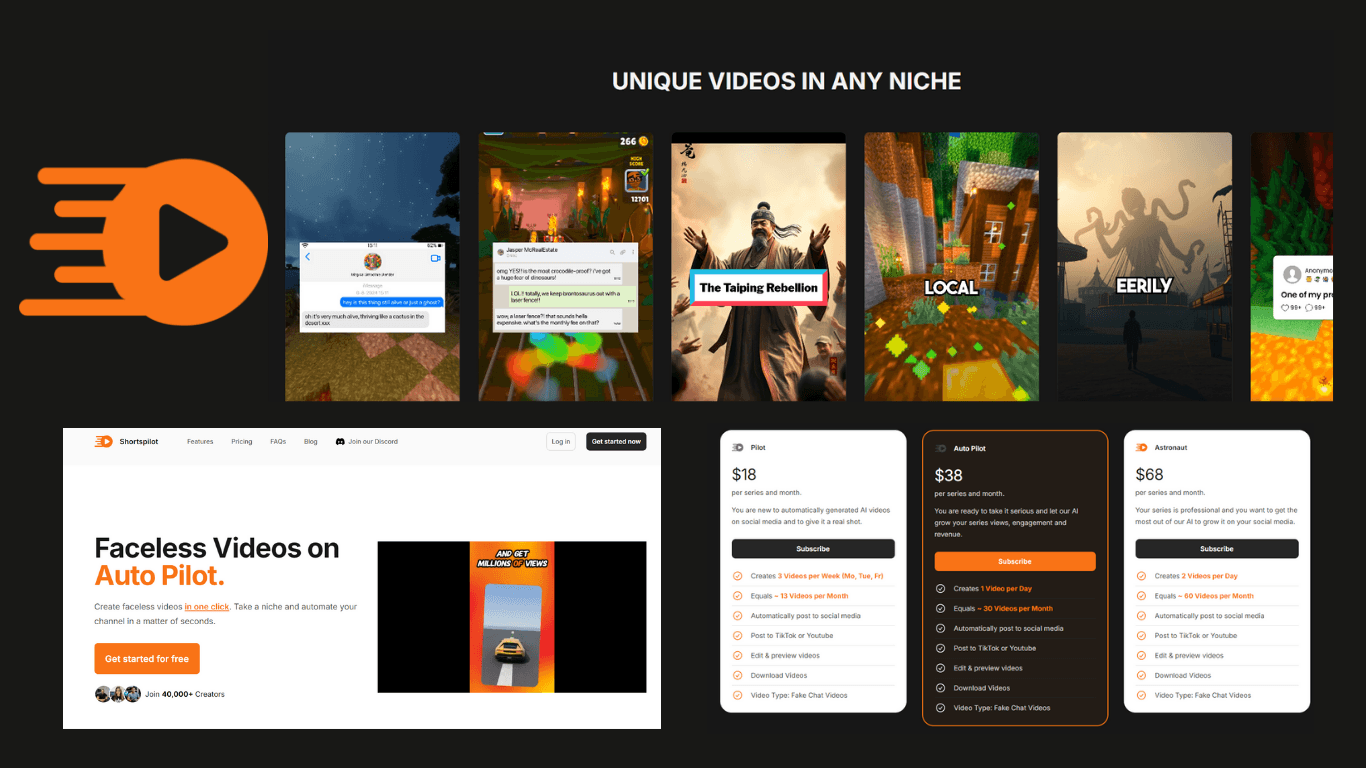How Does the Facebook Algorithm Work?
Facebook is still one of the biggest names in social media, shaping how we connect and how information gets shared. Like a real-time scoring system, the Facebook algorithm filters and ranks social media content for each individual user. In this blog, we’ll explore how the Facebook algorithm works.
Shortspilot

What is the Facebook algorithm?
The Facebook algorithm is the system the social media network uses to identify, rank, and display content in various feeds. It uses programming rules and machine learning to decide what you see in your Facebook Feed. It selects posts, Stories, and ads based on your interactions, the type of content, and how recent the posts are, aiming to give you a personalized and engaging experience. In fact, the algorithm even determines the search results and comments you see on Facebook. Think of it as an always-on system that runs in the background, pinpointing the most relevant results to show. So if you notice that you frequently see posts from certain friends or pages, that’s the algorithm at work. There are a lot of different signals that help Facebook understand what order to show content in your News Feed.
How does Facebook’s algorithm work?
Facebook’s objective is to ensure users encounter posts that resonate with their interests and values. While you’ve likely heard a lot about “beating the algorithm,” that’s not exactly what you want to do. Instead, it’s more effective to find a way to work with the algorithm. The key is understanding how it works in the first place. Behind the scenes, Meta has a whole team dedicated to updating the Facebook algorithm. Through machine learning and artificial intelligence, the algorithm is constantly improving, so what worked for the algorithm a year ago probably won’t work in 2025.
Facebook Feed Algorithm
As of 2025, the Facebook algorithm has transformed into a sophisticated, AI-driven system focused on delivering content that resonates with users’ preferences. Facebook’s main Feed features content from the people, brands, and groups a user is already engaging with or following. The algorithm ranks the content shown to each person using a four-step process.
A. Inventory
Initially, the algorithm conducts an inventory of potential feed content. This includes posts from friends, content from pages and groups they’re following, relevant ads, recommended content based on activity, and more. Importantly, any content that breaches Facebook’s Community Standards is immediately excluded from consideration.
B. Signals
Once all of the content has been taken into consideration, the algorithm uses thousands of signals to determine the relevance of each piece of content. These signals are numerous and diverse, such as the timing of the post, the identity of the poster, the user’s level of interaction with the poster, content type (e.g. links, photos, or videos), user engagement with similar posts, the user’s local time, and even the speed of their internet connection.
C. Predictions
Using these signals, the algorithm makes personalized predictions about the content’s relevance and value to the user. For instance, if a user interacts more with branded posts during early mornings, the algorithm will adjust to show more of those posts during that timeframe.
D. Relevance
Finally, each piece of content is assigned a ‘relevance score.’ Content with higher scores gets priority in the Feed. The first piece of content you see is what the Facebook algorithm has decided is most relevant for you. To avoid monotony, it avoids showing consecutive posts from the same creator or a series of similar content types back-to-back.
Facebook Reels Algorithm
In 2025, the Facebook Reels algorithm operates with a distinctive approach, tailored to the platform’s increasing emphasis on short-form video content. Since they just became a feature in late 2021, there’s less information available about how the algorithm works for these videos. Here are the factors the Facebook Reels algorithm takes into consideration:
- User engagement priority
- Entertaining your audience
- Starting trends and inspiring others
- Content originality and quality
- Community guidelines compliance
- Using creative tools like text, filters, or effects
- Using vertical video and avoiding horizontal videos
- Using music, either original audio or from the Facebook library
- Showcasing your content with good lighting and filming techniques

3 Easy Steps to make your contents using Shortspilot.ai
1. Click "Create New Series".
2. Connect your social media channel and choose one of many niches from the drop down, select your preferred voice and language then click on "create", wait for less than a minute and your video is ready!
3. Adjust the script or the title as needed and click on update, then post video and it will automatically be posted on your preferred social media platform.